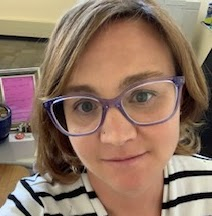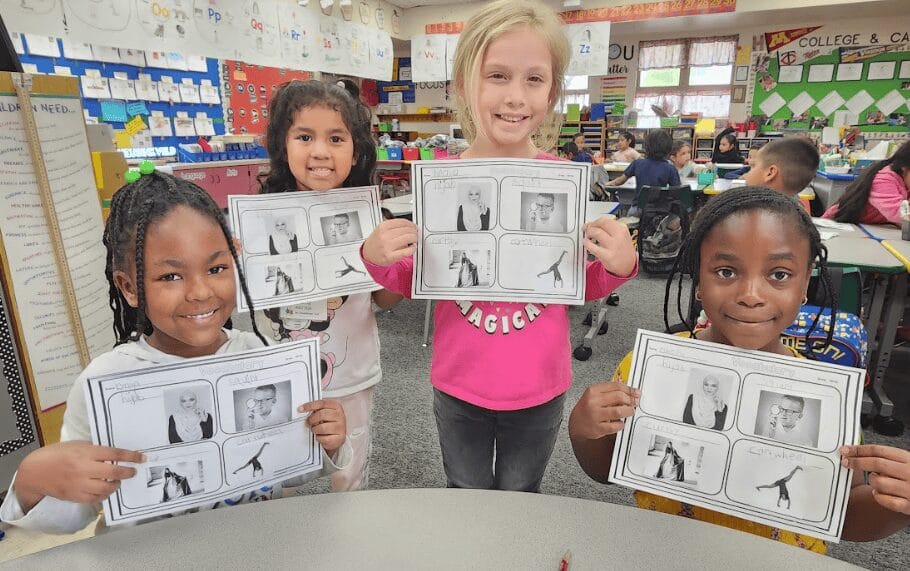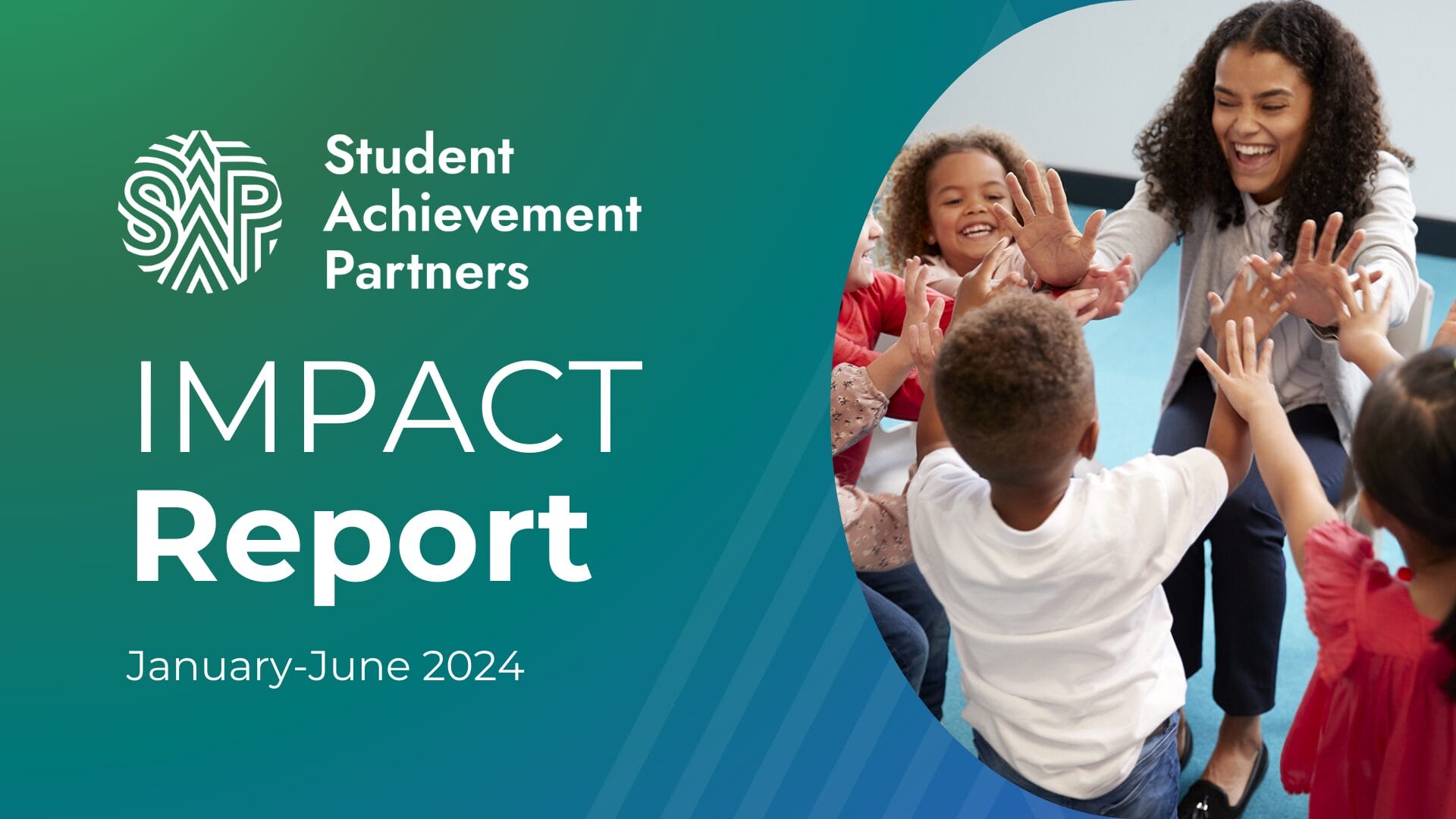The transition from fifth grade to sixth grade can be a difficult one—for students and teachers. Early in the fall, one such difficulty was brought forward to me as a problem of practice. How do we support students moving from division in fifth grade—based on strategies with place value, properties of operations, and the relationship with multiplication—to division in sixth grade where they are expected to fluently use the standard algorithm to divide both whole numbers and decimals? Further complicating this jump was how the resources used approached division. The math PLC at MC P-8, composed of one math teacher from each of fifth, sixth, seventh, and eighth grades, decided to tackle this and additional vertical alignment questions as their work for their PLC this year. They worked through this specific concept of division using a problem of practice protocol, but the question remained of how to systematically continue to have these conversations.
Rewind for a minute to the spring of 2022 and a webinar that was presented on the Math Milestones™ tasks. As I watched this webinar, so many ideas went through my head for potential uses. What was most interesting to me with these tasks was the possibility of using them as a way to support deeper understanding of content. I saw an opportunity for this application to come to life through the MC PLC, and we began designing PLC conversations around the Math Milestones™ tasks.
The first dive into a task began with task 5:6, the Corner Store Problem. The team started by doing the math of the task. Each member of the team approached the task with the math of their grade level as shown.
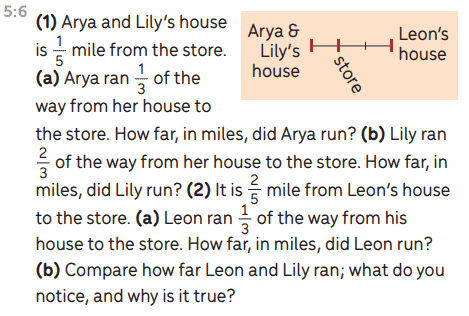
Fifth-grade solution
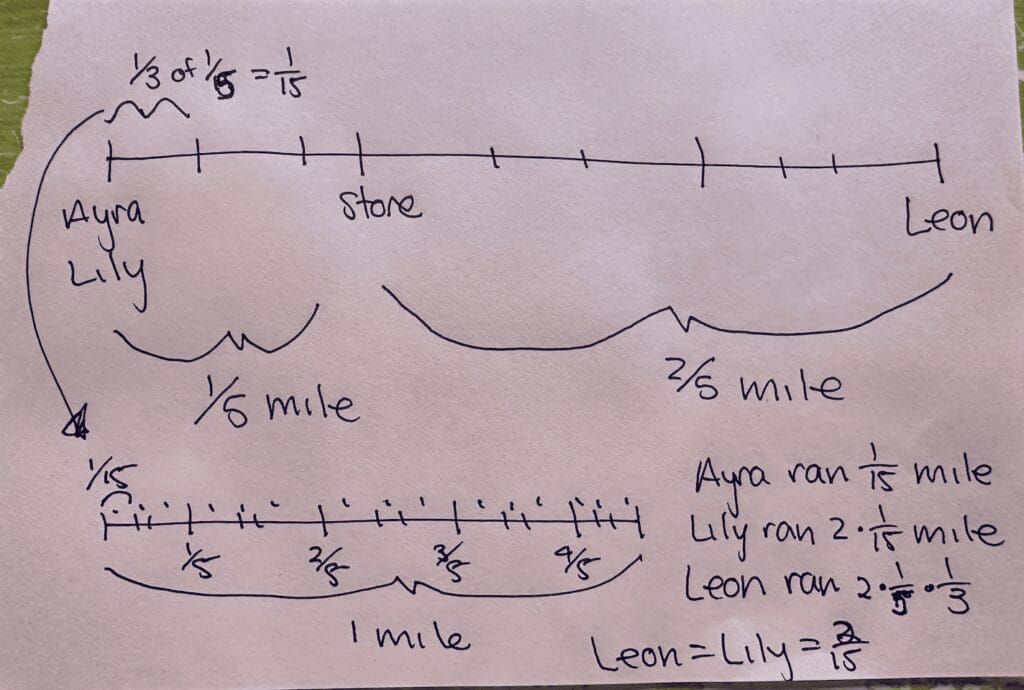
Sixth-grade solution
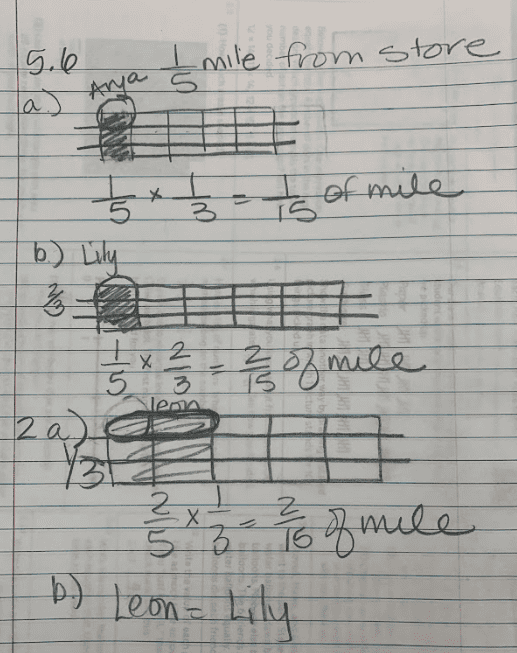
Seventh-grade solution (was all verbal): “I did not write anything down. I solved it by multiplying 1/5 x 1/3 mentally. Then I just doubled it to get 2/3. So It was easy for me because I knew I needed to multiply the fractions and then just double it. The second question I solved the same way by just multiplying the 2/5 x 1/3. I noticed the answers were the same”
After the teachers compared solutions, the conversation naturally evolved into how the understanding relates to the content of their grade. Multiplication of fractions, ratio and proportion, modeling, justifying… in short, a vertical conversation occurred through common math, and teachers were able to consider how the math of their grade level supported and grew from other grades. A structure for PLC began to form.
The PLC continued to choose Math Milestones™ tasks to center their conversations and calibrate on strategies, language, and models. They saw the clear connections in their grade levels and saw how to ensure these connections could become clear to kids. Their thinking about task 7:5 can be seen here.

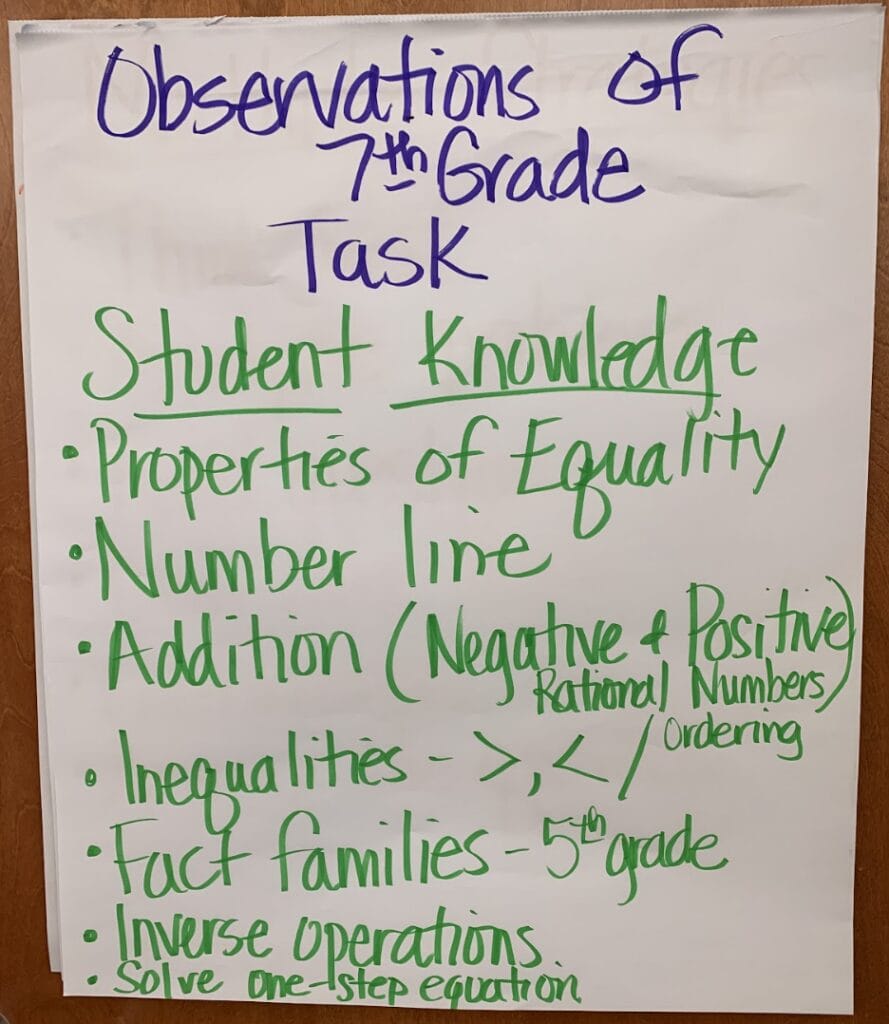
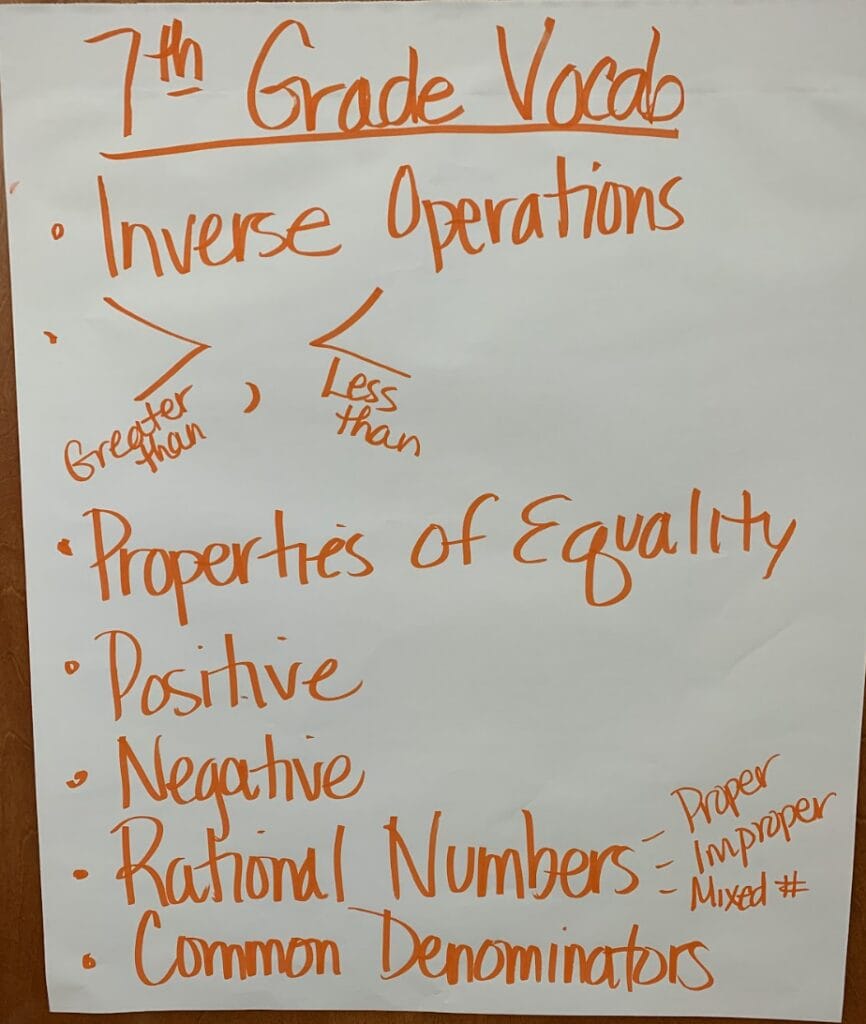
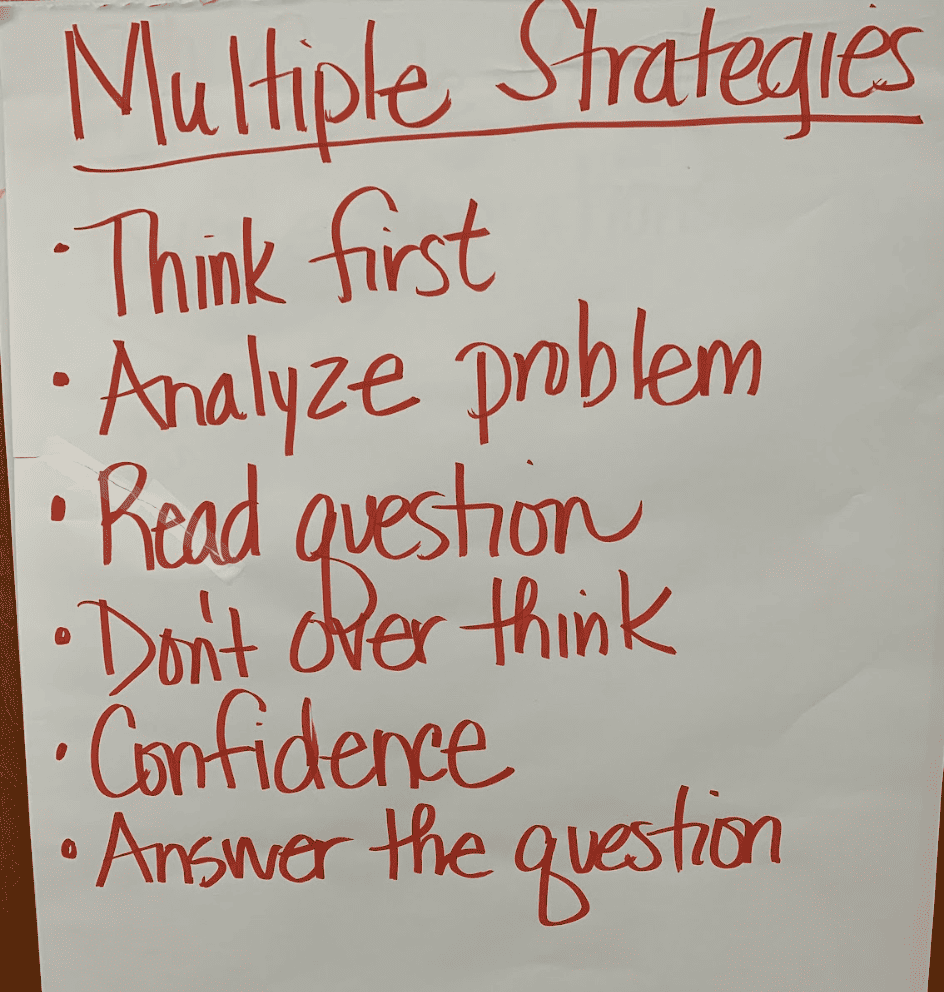
After a rich conversation about this pencils down task, the PLC decided to give task 6:13 to all of their students and see what kind of thinking the task elicited. Fifth-grade student thinking is shown below.
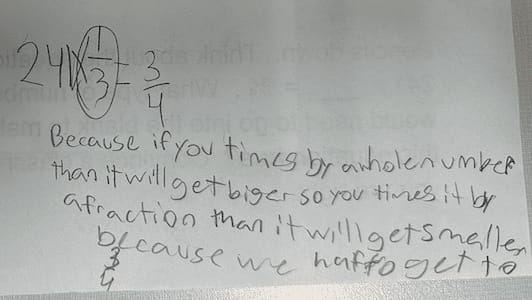

This time, the vertical PLC even had common data to connect on!
As the year has progressed, this PLC has used Math Milestones™ tasks to ground their conversations. Conversations continue to deepen, and connections are being made to their individual classrooms and to impact their instruction. As one teacher said: “It is not that the students don’t know the math, it is just that we don’t know how to tap into what they know. The tasks have enabled us to find these entry points.”


